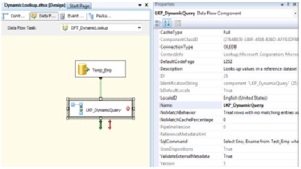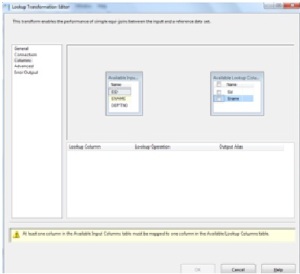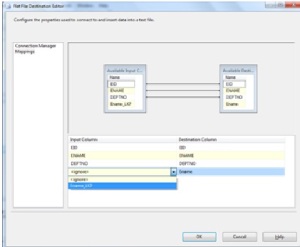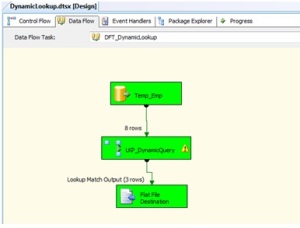Automation of Deploying Reports in Report Server
In this document we can see the automation of Deploying Reports in the Report Server.
Pre-requisites:
PowerShell Script file (Step -1) / Batch file to call .rss file (Step – 3).
.rss Script file (Step -2).
RS Utility installed on the server.
Powershell installed on the server.
Arguments hard coded in PowerShell / Batch script file:
TargetURL
ServerName
DatabaseName
Arguments given by user in Poweshell/Batch script file:
ReportName
SourceReportFolder
TargetFolder
DataSourceFolder
DataSourceName
Script Files
Step – 1: Powershell script to call .rss file
Copy the below code and save the file with .ps1 extension:
# ‘************************************************************************
# Created on :
# Titlte : Script to publish report
# Created By :
# Dependent File that need to be placed to run this script: (Enter the .rss script filename (see step2))
# ‘************************************************************************
# ************
# Clear Screen
# ************
Clear-Host
# *****************************
# Assigning values to Variables
# *****************************
$TargetURL = “http://localhost/reportserver”
$ServerName=””
$DataBaseName=””
# ***************************************
# Assigning values to Variables from user
# ***************************************
#$ReportName=”ReportName”
$ReportName = Read-Host ‘Enter the Report Name (Exclude Extension)’
#$SourceReportFolder=”D:\TestReports\Reports”
$SourceReportFolder = Read-Host ‘Enter the Source path for the Report ‘
#$TargetFolder=”/TestReports ”
$TargetFolder = Read-Host ‘Enter the Target path for the Report ‘
#$DataSourceFolder=”/ Data Sources”
$DataSourceFolder = Read-Host ‘Enter the SourceFolder for DataSources ‘
#$DataSourceName=” DSName ”
$DataSourceName = Read-Host ‘Enter the DataSource Name for the Report ‘
# **********************************************
# Assing values from the variables to rs Utility
# **********************************************
Write-Host ‘Please wait while the Report is deploying….’
rs -i TestReports.rss -s $TargetURL -v TargetFolder=$TargetFolder -v SourceReportFolder=$SourceReportFolder -v DataSourceFolder=$DataSourceFolder -v DataSourceName=$DataSourceName -v ServerName=$ServerName -v DataBaseName=$DataBaseName -v ReportName=$ReportName
Step – 2: .rss file which has the script for publishing Report in the server
Copy the below code and save the file with .rss extension:
‘******************************************************************
‘Created on:
‘Tittle: Script to publish report
‘Created By:
‘******************************************************************
‘Main method is used to call the methods to create folder, Reports, DataSource, and assign the datasource to the reports
Public Sub main()
Try
‘******************************************************************
‘Variables Declaration
‘******************************************************************
Dim ReturnValue As Integer = 0
Dim FileName As String
Dim Indexchar As Integer
Dim DataSourceFolderPath As String
Dim DataSourceFolderName As String
Dim TargetReportPath As String
Dim TargetReportFolderName As String
‘******************************************************************
‘Assigning DataSourceFolderName from DataSourceFolder variable
‘******************************************************************
Indexchar = DataSourceFolder.LastIndexOf(“/”)
‘Getting DataSourceFolderPath
DataSourceFolderPath = DataSourceFolder.Substring(0,Indexchar)
‘Getting DataSourceFolderName
DataSourceFolderName = DataSourceFolder.Substring(Indexchar + 1)
‘******************************************************************
‘Checking whether DataSource Folder Exists or not
‘******************************************************************
ReturnValue = CheckItemAvailability(DataSourceFolderPath, DataSourceFolderName, “Folder”)
If ReturnValue = 0
‘CreateFolder (DataSourceFolderName, DataSourceFolderPath, “”, “False”)
Else
Console.Writeline(“Information: DataSourceFolder ‘”+ DataSourceFolderName + “‘ already Exists..” )
End If
‘******************************************************************
‘Assigning TargetFolderName from TargetFolder variable
‘******************************************************************
Indexchar = TargetFolder.LastIndexOf(“/”)
‘Getting TargetFolderPath
If(Indexchar = 0)
TargetReportPath = TargetFolder.Substring(0,Indexchar+1)
Else
TargetReportPath = TargetFolder.Substring(0,Indexchar)
End If
‘Getting TargetFolderName
TargetReportFolderName = TargetFolder.Substring(Indexchar + 1)
‘******************************************************************
‘ create a folder to deploy the reports
‘******************************************************************
ReturnValue = 0
ReturnValue = CheckItemAvailability(TargetReportPath, TargetReportFolderName, “Folder”)
If ReturnValue = 0
CreateFolder (TargetReportFolderName, TargetReportPath, “”, “False”)
Else
Console.Writeline(“Information: TargetReportFolder ‘” + TargetReportFolderName + “‘ already Exists..” )
End If
‘******************************************************************
‘ Create the datasources if it does not exist
‘******************************************************************
ReturnValue = 0
ReturnValue = CheckItemAvailability(DataSourceFolder, DataSourceName, “DataSource”)
If ReturnValue = 0
CreateDataSource (DataSourceFolder, DataSourceName, ServerName, DataBaseName)
Else
Console.Writeline(“Information: DataSource ‘” + DataSourceName + “‘ already Exists..”)
End If
‘******************************************************************
‘Get the SourceReportFolder path to create the report
‘******************************************************************
ReturnValue = 0
ReturnValue = CheckItemAvailability(TargetFolder, ReportName, “Report”)
‘******************************************************************
‘ Delete the existing Report in the same path
‘******************************************************************
If ReturnValue = 1
DeleteItem (TargetFolder, ReportName)
Else
Console.WriteLine(“Information: No existing Report ‘” + ReportName + “‘ to delete”)
End If
‘******************************************************************
‘ Publish the report
‘******************************************************************
FileName = SourceReportFolder + “\” + ReportName + “.rdl”
PublishReports(FileName, ReportName, TargetFolder)
‘******************************************************************
‘ Set the DataSource for the published report
‘******************************************************************
ReturnValue = 0
ReturnValue = CheckItemAvailability(DataSourceFolder, DataSourceName, “DataSource”)
‘******************************************************************
‘ Set Datasource to the deployed report if the datasource exists
‘******************************************************************
If ReturnValue = 1
SetDataSource(TargetFolder, ReportName , DataSourceFolder, DataSourceName)
Else
Console.Writeline(“Information: DataSourceName ‘” + DataSourceName + “‘ DataSource does not exist”)
End If
Catch e As Exception
Console.Writeline (e.message)
End Try
End Sub
‘******************************************************************
‘Create the Folder to deploy the reports and Datasources
‘******************************************************************
Public Sub CreateFolder(ByVal folderName As String, ByVal folderPath As String, ByVal description As String, ByVal hidden As String)
‘******************************************************************
‘Common CatalogItem properties
‘******************************************************************
Dim descprop As New [Property]
Dim hiddenprop As New [Property]
Dim props(1) As [Property]
descprop.Name = “Description”
descprop.Value = description
hiddenprop.Name = “Hidden”
hiddenprop.Value = hidden
props(0) = descprop
props(1) = hiddenprop
Try
‘******************************************************************
‘Passing the Folder Name, Path of the Folder and Basic Properties
‘******************************************************************
rs.CreateFolder(folderName, folderPath, props)
Console.WriteLine(“Information: TargetReportFolder ‘” + folderName + “‘ Created Successfully”)
Catch e As Exception
Console.Writeline(e.Message)
End Try
End Sub
‘******************************************************************
‘Create Data sources to access the source
‘******************************************************************
Private Sub CreateDataSource (ByVal DataSourcePath As String, ByVal DataSourceName As String, ByVal ServerName As String, ByVal DatabaseName As String)
Dim dsDefinition As New DataSourceDefinition()
dsDefinition.CredentialRetrieval = CredentialRetrievalEnum.Integrated
dsDefinition.ConnectString = “Data Source=”& ServerName &”;Initial Catalog=” + DatabaseName
dsDefinition.Enabled = True
dsDefinition.EnabledSpecified = True
dsDefinition.Extension = “SQL”
dsDefinition.ImpersonateUser = False
dsDefinition.ImpersonateUserSpecified = True
dsDefinition.WindowsCredentials = False
Try
rs.CreateDataSource(DataSourceName, DataSourcePath, false, dsDefinition, Nothing)
Catch e As Exception
Console.Writeline(e.Message)
End Try
End Sub
‘******************************************************************
‘Function to check the report availability
‘******************************************************************
Private Function CheckItemAvailability(ByVal ItemPath As String, ByVal ItemName As String, ByVal ItemType As String)
Dim folderItems As CatalogItem()
Dim folderItem As CatalogItem
Dim ReturnValue As Integer = 0
folderItems = rs.ListChildren(ItemPath, false)
For Each folderItem In folderItems
If ItemType = “Folder”
If folderItem.Name = ItemName And folderItem.Type = 1
ReturnValue = 1
End If
Else If ItemType = “Report”
If folderItem.Name = ItemName And folderItem.Type = 2
ReturnValue = 1
End If
Else If ItemType = “DataSource”
If folderItem.Name = ItemName And folderItem.Type = 5
ReturnValue = 1
End If
End If
Next
Return ReturnValue
End Function
‘******************************************************************
‘Function to publish the report to report server
‘******************************************************************
Private Sub PublishReports(ByVal FilePath As String, ByVal ReportName As String, ByVal TargetFolder As String)
Dim ReportDefinition As [Byte]() = Nothing
Dim warnings as Warning() = Nothing
Dim description As New [Property]
Dim properties(0) As [Property]
Try
‘******************************************************************
‘ Open rdl file
‘******************************************************************
Dim rdlfile As FileStream = File.OpenRead(FilePath)
ReportDefinition = New [Byte](rdlfile.Length – 1) {}
rdlfile.Read(ReportDefinition, 0, CInt(rdlfile.Length))
rdlfile.Close()
‘******************************************************************
‘Set Report Description
‘******************************************************************
description.Name = “Description”
description.Value = “”
properties(0) = description
‘******************************************************************
‘Create a Report
‘******************************************************************
warnings = rs.CreateReport(ReportName, TargetFolder, True, ReportDefinition,Properties)
Console.WriteLine(“Information: Report ‘” + ReportName + “‘ published successfully”)
Catch e as Exception
Console.Writeline (e.Message)
End Try
End Sub
‘******************************************************************
‘Function to assign the datasource for the report
‘******************************************************************
Private Sub SetDataSource(ByVal TargetFolder As String, ByVal ReportName As String, ByVal DataSourceFolder As String, ByVal DataSourceName As String)
Try
rs.Credentials = System.Net.CredentialCache.DefaultCredentials
Dim ReportPath As String = TargetFolder + “/” + ReportName
Dim DataSources(0) As DataSource
Dim DsRef As New DataSourceReference
Dim objDS As new DataSource
DsRef.Reference = DataSourceFolder + “/”+ DataSourceName
objDS.Item = CType (DsRef, DataSourceDefinitionOrReference)
objDS.Name = DataSourceName
DataSources(0) = objDS
rs.SetItemDataSources(ReportPath, DataSources)
Console.Writeline (“Information: DataSource ‘” + objDS.Name + “‘ is set to the report ‘” + ReportName + “‘”)
Catch e As Exception
Console.Writeline (e.Message)
End Try
End Sub
‘******************************************************************
‘Function to Delete the report from report server
‘******************************************************************
Private Sub DeleteItem(ByVal FolderName As String, ByVal ItemName AS String)
Try
rs.DeleteItem (FolderName + “/” + ItemName)
Console.WriteLine(“Information: Exisiting Report ‘” + ItemName + “‘ deleted Successfully”)
Catch e As Exception
Console.Writeline(e.Message)
End Try
End Sub
Step – 3: (Optional) Script of Batch file to call .rss file
Copy the below code and save the file with .bat extension:
REM ‘************************************************************************
REM Created on :
REM Titlte : Script to publish report
REM Created By :
REM Dependent File that need to be placed to run this script: (Enter the .rss script filename (see step2))
REM ‘************************************************************************
REM ************
REM Clear Screen
REM ************
cls
REM *********
REM @echo OFF
REM *********
REM *****************************
REM Assigning values to Variables
REM *****************************
set TargetURL=http://localhost/reportserver
Set ServerName=
Set DataBaseName=ReportServer
REM ***************************************
REM Assigning values to Variables from user
REM ***************************************
set ReportName= ReportName
REM set /P ReportName=Enter the Report Name (Exclude Extension) :
set SourceReportFolder=D:\TestReports\Reports
REM set /P SourceReportFolder=Enter the Source path for the Report :
set TargetFolder=/TestReports
REM set /P TargetFolder=Enter the Target path for the Report :
Set DataSourceFolder=/ Data Sources
REM Set /P DataSourceFolder=Enter the SourceFolder for DataSources :
Set DataSourceName=DSName
REM Set /P DataSourceName=Enter the DataSource Name for the Report :
REM **********************************************
REM Assing values from the variables to rs Utility
REM **********************************************
echo Please wait while the Report is deploying….
rs -i TestReports.rss -s %TargetURL% -v TargetFolder=”%TargetFolder%” -v SourceReportFolder=”%SourceReportFolder%” -v DataSourceFolder=”%DataSourceFolder%” -v DataSourceName=”%DataSourceName%” -v ServerName=”%ServerName%” -v DataBaseName=”%DataBaseName%” -v ReportName=”%ReportName%”




















